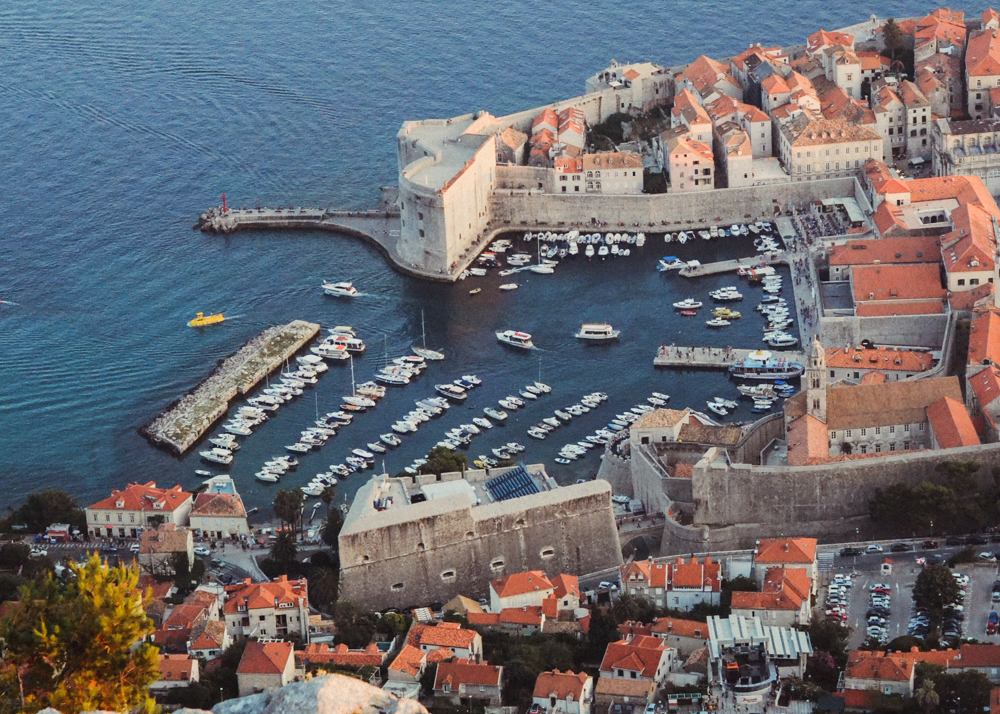Located between Central Europe and southern Europe, directly in the Adriatic, Croatia seduces visitor with an attractive blend of landscape beauty, pleasant climate, culinary pleasures and places full of history.
We consider this combination as irresistible, that’s why we offer a wide range of exclusive trips with a stopover in Croatia. Among them, naturally, you should not miss a visit to Dubrovnik, Split and Opatija.
Therefore, we invite you today to get to know the three most beautiful cities of the Adriatic, through a short virtual incursion:
Opatija – With its atmosphere of Danubian Monarchy
We start our journey in Opatija, which we reach from the Slovenian capital, Ljubljana in two comfortable hours of travel.
The Kvarner Bay is uniquely interesting, as are the promenade and the excellent Mediterranean cuisine of the restaurants in this area, based on seafood, fruit and vegetables. All this invites you to relax and enjoy the environment. That’s why it is no surprise that the city became a favorite destination for health and thermal treatments in times of the Austro-Hungarian Monarchy. Today, many of aristocratic residences bear witness to this past splendor, which we will admire during our relaxed walk as well as the wonderful Park of Split.
This park is a real highlight and like the romantic park of Angiolina and Sveti Jakov leaves no one indifferent. Placed in the center of Opatija in 1884, it is rich not only in native species but also in exotic plants. The flowers that you can see here may be familiar to you, as they come not only from Japan, China and Australia, but also from different regions of South America. Especially popular is the camellia, which was first brought to the city by the patrician, Iginio Scarpa in honor of his wife in the late 19th. Today it not only blooms in many parks in the city, but a jury annually awards the most beautiful specimens prizes.
Split – History at every turn
The second stop on our trip is Split, Croatia’s second largest city. The importance of this port city to the region is revealed by the fact that it was chosen as the capital of Dalmatia.
Naturally, we also find witnesses to history here. This time the monuments even lead us to travel 1600 years back into the past, since the origins of the city date back to the Diocletian’s palace of the 4th century AD. Thanks to this circumstance, Split’s old town deserved its entry on the Unesco World Heritage list, as you can see.
But not only the Romans left their footprints in Split. The Greeks, who settled in the mid-Paleolithic period in this region, found it attractive enough to create a colony there in the 4th century BC. The city suffered assaults from both Pannonian Avars and Slavs as well as from Venetian and Byzantine sovereignty in its turbulent history. All this resulted a varied cultural and historical heritage, which we will discover in the framework of a guided tour through Split. So have your cameras ready; the stunning monuments and the unforgettable summer light of this part of Europe will invite you not only to admire, but also to make unique snapshots.
Dubrovnik – the pearl of The Adriatic
Naturally, a Tour of Croatia cannot end without a visit to Dubrovnik. The country’s best-known port city captivates by its location in the emerald green waters of the Adriatic Sea, the Mediterranean charm of its cobblestone streets, its pedestrian center and its sea of red roofs. No wonder Dubrovnik stimulates fantasies, that´s why the city is regularly used as the setting for TV series and movies. Game of Thrones is not only found on TV screens ?
The city wall, 1940 meters long greatly impresses the traveler. While visiting the wall, we will feel the gentle breeze of the Adriatic and discover the secrets of the best-preserved medieval fortress in Europe, which since 1979 has enjoyed membership of the Unesco World Heritage list.
Dubrovnik not only offers wonderful views, it also conquers the traveler by an incomparable way of life. Now part of an independent republic after centuries, it still represents the desire for freedom to this day. The motto of the Lovrijenac fortress demonstrates the thirst for freedom of its inhabitants; it says: “Freedom will not be sold even for all the gold in the world.” The fear of loss of independence wasn’t unfounded, as the fortress had to defend itself from the attacks of the Venetians, the Ottomans, Napoleon’s troops and the Austrians.
Life in Dubrovnik today is naturally much more peaceful, so the city that is probably the largest open-air museum in the world, and a fashionable maritime destination, attracts visitors from all over the world and conveys an image of past times.
Don’t let this pleasure slip away. We look forward to celebrating with you the Croatian way of life with fine Mediterranean cuisine and a good glass of local wine.
Have we convinced you?




